|
| |
|
AN-TIQUE (an-teek)
An object having
special value because of its age, especially a domestic item, piece of
furniture or decorative arts object esteemed for its artistry, beauty,
mechanical ingenuity, or period of origin. |
|
The
Antiques Almanac, a five-edition-per-year online magazine for beginning and
intermediate antiques collectors and those just interested in finding out about
old things, is your first stop on the Web in your search for information
about antiques and collectibles. Here, you’ll find articles on a variety
of American and international antiques, including furniture, china,
glass, silver, and other decorative arts from the Colonial, Empire,
Victorian, Art Nouveau, and Art Deco Periods, plus vintage and modern
collectibles, interesting historical facts, antique tips, and
recommendations for caring for your collections. Come back often to see
what's new. And be sure to tell your friends about us.
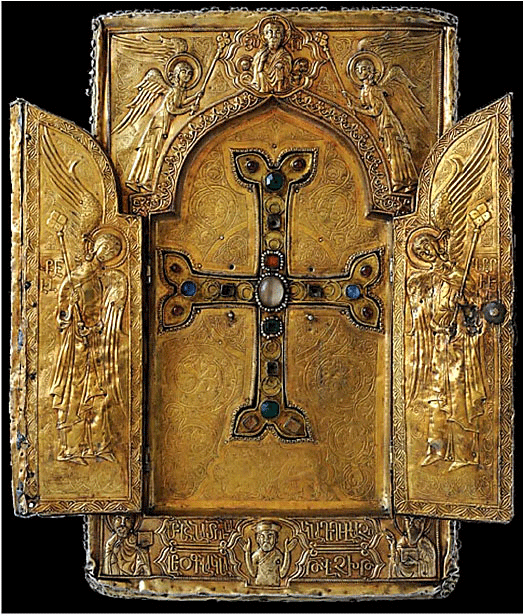 |
This
edition's
theme:
"Sacred Artifacts"
Volume 18 No. 5
This edition features articles about
antique and vintage sports memorabilia.

|
 |
|
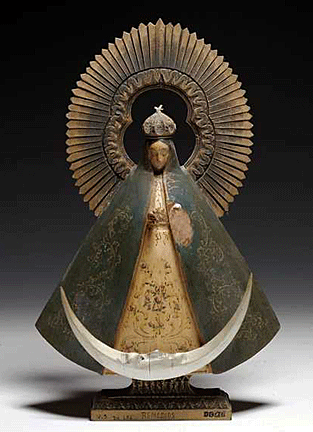 |
A
400-Year-Old Tradition
Latinos,
especially those living in New Mexico, venerate wooden statues called
santos. These sculptures lie at the very heart of a 400-year-old
cultural tradition. They’ve existed for centuries, ever since the early
Spanish Colonial era.
More Antiques Articles |
|

|
|
 |
Tradition, Tradition, Tradition
While
many people around the world prepare to celebrate the birth of Jesus at
Christmas this month, Jews are preparing to celebrate their annual
festival of Chanukah—the Festival of Lights—which, this year, coincides
with the Christmas season. But that’s where the similarity ends.
More
Collectibles Articles |
|
 |
|
 |
Russia's Miraculous Icons
“Behold,
a virgin shall conceive, and bear a son, and shall call his name
Immanuel.” As Our Lady of Vladimir raises up her hands with a powerful
gesture in a prayer of intercession, the Russian people receive the
blessing of God's eternal Word through an icon bearing her image. And so
it has been for 10 centuries.
Like all other peoples that embraced Byzantine Christianity in the
Middle Ages, the Russians realized that an icon was essentially both a
devotional image and a work of art.
More
Special Features
|
|
 |
|
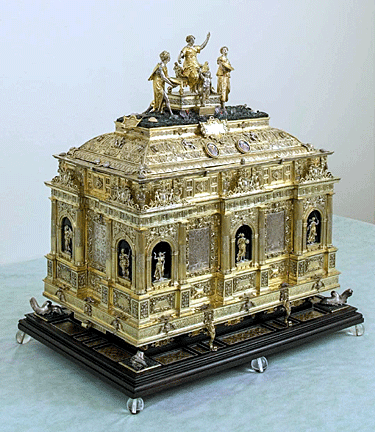 |
A Home for Sacred Relics
Relics—bits of
bone, clothing, shoes, or dust—became popular in Western
Christianity in the Middle Ages. The cult of relics dates
back to the 2nd and 3rd centuries, when the Romans
persecuted and often killed martyrs by fragmenting their
bodies. The intention was to desecrate their bodies through
execution and burning. By the late 3rd to early 4th
centuries, early Christians began to revere the fragments of
the martyrs as source of spiritual power and special access
to the divine.
More
Antique Spotlights
|
|
 |
|
 |
Collecting Islamic Prayer Rugs
To Muslims around the world, a prayer rug, also known as sajjadat
salat, a term that comes from the prostration worshipers do during
Islamic prayers or sujood—can be found in every Muslim home and
is often a constant travel companion.
More
Collecting Articles
|
|
 |
|
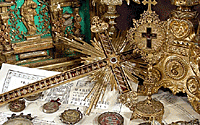 |
Displaying Your Treasures
Collecting
antiques and collectibles is one thing, displaying them is quite
another. Some items lend themselves to small tabletop or wall displays
while others, like furniture, for instance, are so large that they
require an entire house. How much space you have for display will
ultimately dictate what sort of antiques, and how many of them, you can
acquire that will fit into the space you have.
More
Caring for Collections |
|
 |
The
2025 Holiday Edition
featuring
"Sacred
Artifacts"
is here
Go through the menu and read all the
New!
articles. |
 |
The Best Selling Book of All Time
by Bob Brooke

With estimated
total sales of over 5 billion copies, the Christian Bible is
the best-selling publication of all time. Old Bibles
occasionally show up at antique shows and church festivals.
Most are large Victorian pictorial family ones with a
variety of features in addition to the traditional religious
verse. Besides the Old and New Testaments, many include a
Concordance, Aprocypha, and Psalms, and lots and lots of
beautiful illustrations.
Read more. |
|

|
|
The Sacred Art of Glencairn
by Bob Brooke

Raymond
Pitcairn had a vision—to build a castle-like mansion high on a hill
north of Philadelphia in Bryn Athyn, Pennsylvania. Here, he and his wife
could raise their family, and he would have a place to house his art
collections.
Read more. |
|
 |
|
The Origins
of Christian Vestments
by Bob Brooke

To set
themselves apart from their followers, the celebrants of
Christian religious rites wear special garments called
vestments. In the earliest days of the Church, vestments
were essentially better forms of the clothing worn during
the time celebrants spent at the altar. As time progressed
and fashions changed, the dress of the priests and clerics
of the Church didn’t and gradually became more distinct from
secular fashions.
Read more |
|
 |
|
Mementos of Faith
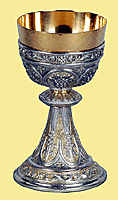
Ecclesiastical collectors search antique shops, flea markets and
church rummage sales in the hopes of finding objects and furniture
used in mostly Christian religious practices. Examples of monastic
art, the delicate needlework of cloistered nuns, painted icons,
carved candleholders, prayer beads and baptismal fonts originally
intended for Christian houses of prayer often command astronomic
prices from knowledgeable antique dealers.
Read more |
|
How to Recognize and
Refinish Antiques for Pleasure and Profit
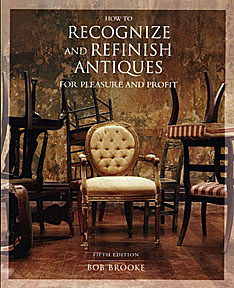
Have
you ever bought an antique or collectible that was less than perfect and
needed some TLC? Bob's book offers tips and step-by- step
instructions for simple maintenance and restoration of common antiques.
Read an
Excerpt |
|
BREAKING
NEWS
Menagerie Wagon Rolls in at Three Times Its Estimate
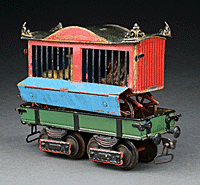
Beating out its $10/15,000
estimate was an extremely rare Märklin Hagenbeck’s Menagerie
transport train wagon, in gauge 1, that featured a lid that
opened to reveal two associated composition lions in a
single-compartment gondola car. Measuring 8½ inches in
length and in exceptional condition, it finished at $33,750.
|
|
BIZARRE
ANTIQUITIES
|
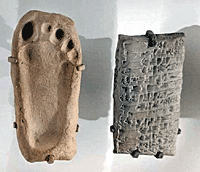
This ancient
Sumerian birth certificate consists of a clay
tablet found at the Sumerian city of Nippur in
southern Iraq. It's estimated to date to around
2000 to 1600 BCE. and contains a birth
announcement, the infant's gender, the names of
its parents, and a footprint of the newborn.
|
|
|
Read what our
readers are saying about
The Antiques
Almanac
Comments

Send us your comment
|
|
|
